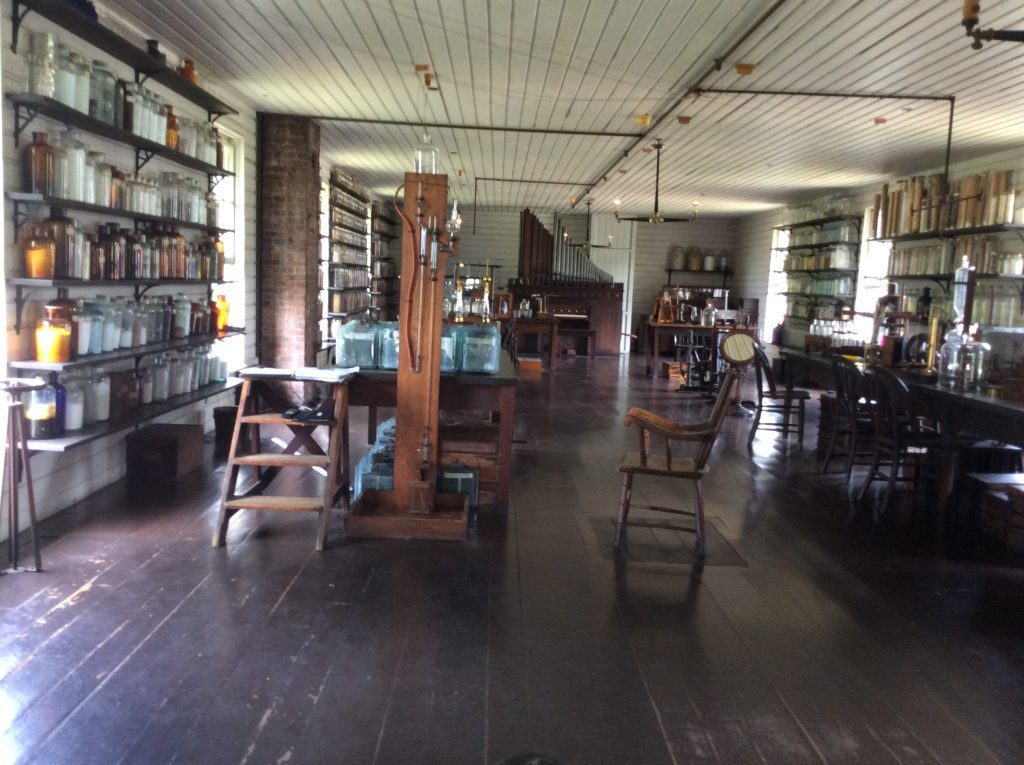Description. Whether you live for it or skip over it, most novels can’t exist without it. But how do we paint word pictures as vivid as Vincent van Gogh’s The Starry Night?
We’re taking a short break from our thirteen-part Character House series to discuss ten ways to use specific, vivid, and concrete details to bring your stories to life.
Why is Description Important?
Description comprises the sensory details of characters, settings, objects, and activities. These details produce clear images in readers’ minds, allowing them to envision the story for themselves.
Details can also establish a mood. In a cheerful scene, trees may dance in the gentle breeze, but in a scary scene, those same trees might claw at the midnight sky with jagged branches.
Description can showcase characters’ personalities by showing rather than telling. A room full of shiny awards and towering trophies can indicate a character who values achievement, while a cluttered desk may imply a busy or disorganized owner.
Finally, sensory details can signal changes in the plot and character arcs. Suppose Allie enjoys baking with her grandma in a warmly lit kitchen that smells like cookies. But after her grandma dies, the same kitchen becomes dark and empty. The setting represents Allie’s sadness and grief.
Description doesn’t exist solely for its own sake; it exists to serve the story. The following tips will help you describe your settings, scenes, and characters with the best words possible!
1. Envision the scene with all five senses.
When writing or editing a scene, imagine all the sensory details of the setting: sight, sound, smell, taste, and touch. Other details may include temperature, weather, lighting, and any background people (such as the spectators in a stadium).
A scene on a farm might include the sunlight peeking over the barn (sight), the lowing of cows (sound), the earthy scent of dirt (smell), sweet apple cider (taste), and humid air (touch).
You don’t have to describe all five senses in every scene. Instead, choose particular details that create the precise images you intend.
2. Be specific.
Concrete details engage the readers’ imaginations and allow them to experience the story along with your characters. Here are some examples of transforming vague descriptions into specific ones:
- Generic: She was beautiful.
- Specific: Her eyes sparkled, and her silky black hair cascaded down her back.
- Generic: The house was large.
- Specific: The pillared entrance opened into an echoing foyer lit by a silver chandelier.
Instead of using vague words, such as beautiful and large, use specific details to convey your intended meaning of each of these words. In the second specific example, the house isn’t merely large; it’s large enough to boast a pillared entrance and an echoing foyer.
3. Describe things in action.
Readers are more engaged when you describe characters, objects, and settings with strong verbs. Combining description with action reveals the details naturally and keeps the pace moving.
Weak verbs indicate mere existence or possession, such as was, were, or had. By contrast, strong verbs convey action, such as jumped, shimmered, or twirled.
4. Make the descriptions meaningful.
Choose specific details that communicate aspects of the plot, theme, characters, and emotions. Consider the following two character descriptions:
- She had brown hair, blue eyes, and a green shirt.
- Her patterned skirt fluttered in the breeze.
The first description doesn’t convey anything beyond mere appearance. On the other hand, the second example uses appearance details to convey the character’s personality. The multicolored skirt implies that she’s creative, and the verb fluttered implies that she’s carefree. Instead of only describing appearance, these details point to deeper facts about the character.
5. Pay attention to word connotations.
A denotation is the dictionary definition of a word, while a connotation refers to the emotions associated with that word.
Although both cozy and cramped can describe small spaces, cozy has a positive connotation, conveying comfort and warmth. By contrast, cramped has a negative connotation, hinting to discomfort and stress.
Choosing words that carry the correct connotations can give your scenes a clear emotional tone. Suppose a cheerful scene describes a character watering her garden. The descriptions might mention floral scents and butterflies flitting around plants. However, if that same character enters the garden after losing a loved one, she may notice more dismal details: the drooping lilies and the weeds choking out the tomato plants.
6. Describe things through your point-of-view (POV) character.
Whether you’re writing in first person or third, your POV character’s interests, emotions, and background will determine the word choice and details included in the narration.
A detail-oriented POV character may notice minute observations, such as the design of a soldier’s armor. Meanwhile, a poetic character might use artistic expressions, such as describing the sunset as “a watercolor palette.”
Similarly, the emotions of your POV characters will influence the details they report. A character who fears the ocean might say that the churning waves crashed onto the shore. To the contrary, a character who loves the ocean might describe the rhythm of the waves lapping on the shoreline.
7. Use similes and metaphors with restraint.
A simile compares two unlike things by using like or as: “The flower petals twirled like graceful dancers.” Meanwhile, a metaphor compares two unlike things without using like or as: “Diamonds sparkled in the snow.”
Well-chosen similes and metaphors fit the tone of the scene and the emotion of the narrator. This simile contains a positive tone: “The sweater warmed me like a blanket.” By contrast, this simile contains a negative tone: “The sweater strangled me like a bristly rope.”
8. Use references.
If possible, visit the location you’re describing. Take photos, videos, and notes about sensory details.
My 2018 novel, The Time Travel Team: The Great Historic Mystery, contains a scene set in Thomas Edison’s lab. To write this scene, I visited the replica of Edison’s lab in Greenfield Village, a historical complex in Dearborn, Michigan (see the photo below). When I sat down to write, I could incorporate these real-life details into my scene.

My photo of Thomas Edison’s lab replica at Greenfield Village.
If an in-person trip isn’t feasible, you can do research, find reference photos, and interview people who have visited the location. For historical settings, books and online articles can provide a wealth of information about a time period.
Angela Ackerman and Becca Puglisi have compiled online thesauruses for urban and rural settings, weather, and textures. These thesauruses contain sensory details, sample descriptions, and sources of conflict for numerous different settings.
The Keys to Immersive Description
To write vivid description, use specific sensory details that reflect actions, emotions, personalities, and attitudes. Choose strong verbs and nouns that have the correct connotation (positive or negative) for the intended mood. Never underestimate the power of a well-chosen simile or metaphor.
When you choose significant, concrete details, your word pictures will leap off the page, immersing the audience in the world of your story
What’s your favorite setting in your novel?
You May Also Like
- The Character House, Pt. 13: 3 Ways to Build a Character House
- The Character House, Pt. 12: The 5 Stages of a Moving Character Arc
- The Character House, Pt. 11: Roof and Personality Traits
- The Character House, Pt. 10: Emotions and Home Utilities
- The Character House, Pt. 9: The Windows of Voice and Vulnerability
Want more posts like this one? Sign up to receive new blog posts in your inbox. You’ll also receive my monthly newsletter, featuring encouragement, announcements, and writing tips to inspire your creative journey!

